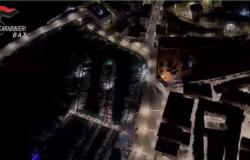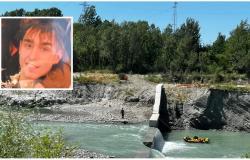It will be the first completely digitalized volcano in the world, “beating” many other renowned volcanoes such as Vesuvius, Mount Fuji or the fearsome Marsili
Etna is one of the best-studied volcanoes in the world. It is constantly monitored from different sensors and instruments connected directly to the INGV operations center in Catania and hundreds of scientists visit its slopes annually to explore its secrets and history.
Recently, however, some researchers at INGV have decided to create an important new tool that can improve your studies related to the volcano.
A completely digital model of Etna, which will allow us to reveal many of its internal dynamics, the same ones that then cause eruptions and earthquakes.
This is the first time that scientists are trying to produce an entire “digital” volcanoproviding research with a new tool capable of overcoming the technical limits imposed by nature.
Until now, in fact, geologists had no way of directly observing the phenomena that occur inside a magma chamber, but through this model this will be made possible, thanks to the computing power of IT tools.
Adv
The creation of this “digital twin of Etna” – as some of the press has begun to define it – is one of the main objectives of the European project Horizon Dt-Geo (acronym for Digital Twin for Geophysical Extremes), which in turn is an offshoot very important part of the international Destination Earth project, whose final aim is to create a complete model of the Earth’s surface and crust.
A tool that promises to be very important for the future, since it will not only allow us to better understand the geological phenomena that cause a good part of natural disasters, but also to partially prevent the onset of the biggest dangers and to simulate the effects of climate change.
The budget financed to create this virtual model of Etna is 12 million euros, while the project is also involving researchers from other INGV locations, in addition to Catania, including Pisa, Naples and Bologna.
Several Italian universities and Cineca are also collaborating on the project, which is expanding the calculation system used by researchers to model the phenomena that can be observed during an eruption.
«The objective is to discover the distribution of forces inside the volcano and where the eruptive vents will be, measuring the deformation and variation in slope of the ground through GPS, satellite data and sensors» explained Flavio Cannavò, researcher at the INGV of Catania is among the main researchers involved in the creation of the model.
To obtain it in a short time, scientists are also using new software, based on artificial intelligence, demonstrating that this technology – increasingly despised and demonized by the press and social media – can still be very useful in various scientific projects.
Obviously, before having a complete simulator of Etna available, a few more years will have to pass, spent in inserting all the information we have available relating to its structure, chemical composition, its behavior and the effects that its lava and its ashes on land as well as in the atmosphere.
However, it makes a certain impression to know that Etna will be the first completely digitized volcano in the world, beating many other renowned volcanoes such as Vesuvius, Mount Fuji or the fearsome Marsili.
It should also be underlined that the discoveries made by creating this model will also be very useful for predicting the effects of ash and dust on air traffic, so as to alert the airports when clouds of volcanic material risk impacting airplanes in flight.
«The study relating to the gas naturally emitted by volcanoes can also prove very useful» INGV clarifies. “According to some theories yet to be demonstrated, by constantly measuring the emission of sulfur dioxide we could follow the movement or emergence of the magma inside the volcano.”





